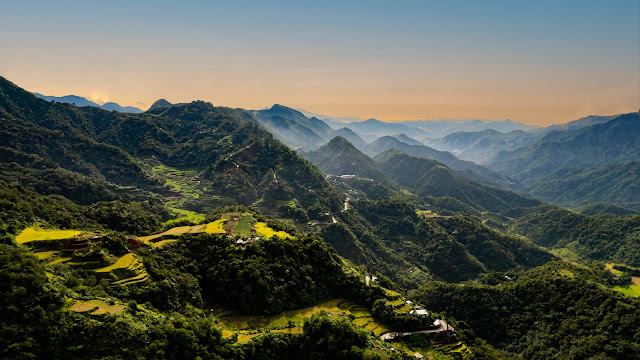Are you planning to go on your first hike in the Philippines? With its diverse landscapes and breathtaking nature, the Philippines is a haven for outdoor enthusiasts and adventure seekers.
If it's your first time traveling and hiking in this beautiful tropical country, you're in for a lot of fun and great memories. However, before embarking on your first hike, it's important to pack the right gear and essentials to ensure a safe and enjoyable experience.
This article covers everything you need to know about what to bring on your first hike in the Philippines, from basic essentials to specialized gear for different types of hikes. Make sure to bring a mechanical pencil and a journal to jot down all the beautiful memories you experienced and the people you meet.
So, get started and prepare for an unforgettable adventure in the beautiful Philippine mountains!
1. Proper Hiking Footwear
Choose the right pair of shoes that will provide traction, support, and protection from the elements. The terrain of Philippine mountains can range from rocky, uneven, and sometimes wet and muddy. Your shoes must be able to withstand these conditions.
The weather in the country is tropical and can be extremely hot, especially during the summer season. A breathable shoe will help keep your feet comfortable by allowing air to circulate around them.
2. Water And Snacks
It is important to stay hydrated and nourished when hiking. A good rule of thumb is to bring a liter of water every two hours you plan to be in the wilderness. As humidity can make one feel dehydrated quickly, packing several bottled waters may be advisable while visiting the Philippines.
When you bring snacks, choose nutritious ones over sugary and junk foods. Remember to bring a utility knife for cutting and preparing food should you plan to pack fruits and prepare your meal on site.
3. Lightweight And Breathable Clothing
In the driest months of March to June, temperatures can reach scorching levels. Lightweight fabrics like nylon and polyester are breathable and quick-drying. This will keep you comfortable on the trail.
The temperature and climate conditions can change abruptly, so it's ideal to dress in lightweight, moisture-wicking layers. Wearing layers will give you ample protection from sun and rain and prevent you from getting sick.
Remember to avoid wearing cotton because it absorbs sweat and takes longer to dry. When you wear this, it can make you feel damp and uncomfortable. And when the temperature at night goes down, you might feel cold.
4. Sunscreen And Insect Repellant
Pack a broad-spectrum sunscreen to protect your skin from the sun's harmful rays, preferably with a sun protection factor (SPF) of at least 30. Apply it liberally on any exposed skin and reapply every two hours.
To make the most of your trip to the lush forests, you should take measures to avoid insect bites. This will prevent you from getting any fever, which is not an enjoyable way for anyone's trip abroad to end up. Hence, it’s best to pack those insect repellants with active ingredients like DEET, picaridin, and citronella.
5. First Aid Kit And Emergency Supplies
Anything can happen on a hike, so you must be prepared. You might get injured, have blisters, or get a fever. Bring a complete first aid kit with enough of the following:
- Adhesive bandages and gauze pads
- Antiseptic wipes
- Tweezers
- Pain relievers
- Sunburn relief
- Insect bite relief
- Antibiotic ointment
- Disposable gloves
- Elastic bandages
- Instant cold packs
You may also pack these emergency supplies
- Whistle
- Matches or lighters
- Flashlight
- Extra batteries
- Compass and map
When you have these, you can be sure to treat any ailments you may encounter when hiking and be better prepared during emergencies. It's good if you have proper training. You may check out first aid training in Edmonton to know more.
6. Camera And Binoculars
The Philippines is a beautiful country, and the mountains have incredible vistas where you can witness stunning landscapes when you reach the top. Although it's not essential when hiking, a camera and binoculars will let you enjoy your trip more. You can capture extraordinary images to serve as souvenirs. These photos will allow you to relive the experience long after the journey has ended.
On the other hand, binoculars are a useful tool to have when hiking, especially if you're planning to explore areas with diverse wildlife and stunning viewpoints. They allow you to see distant objects and landscapes in greater detail, making your trek more enjoyable and informative.
With binoculars, you can spot rare bird species, observe animals in their natural habitats, and take in panoramic views of mountains, valleys, and lakes. Furthermore, binoculars can be used for safety purposes, such as scanning ahead for potential hazards or identifying distant landmarks to help with navigation.
Conclusion
Hiking in the Philippines will be an unforgettable and magnificent adventure you can cross off your bucket list. You can hike successfully in the mountains of this tropical paradise if you're prepared and protected. So, pack your bags with the list this post enumerated, hit the trails, and enjoy the beauty of this splendid country. Enjoy hiking!



0 comments :
Post a Comment
Looking for Budget Travel Guide Blogs, Hotel Reviews, and Sample DIY Itineraries?
Welcome to Pinoy Adventurista, "Your Next Ultimate Adventure Starts Here!"
Pinoy Adventurista is one of the Top Travel Blogs in the Philippines and the World. In 2013, he visited all the 81 provinces in the Philippines.